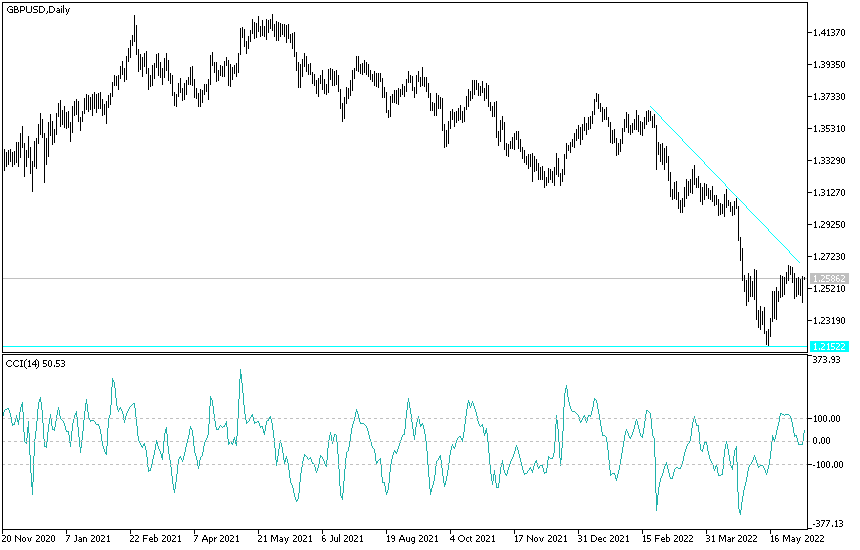[ad_1]
The price of the pound sterling rebounded, while other currencies fled the dollar fund yesterday. This is after international trade data showed a decline in US demand for imported consumer goods during the month of April in a result that may be related to the monetary policy expectations of the Federal Reserve. The price of the currency pair sterling against the dollar rebounded GBP/USD from the support 1.2430 all the way to the resistance 1.2600 and is trying to stabilize above it during trading today, Wednesday. Yesterday the dollar was broadly bought, resulting in gains on almost all major currencies, although this trend was reversed somewhat after the Census Bureau released its trade balance estimate for April.
According to the announced figures, the deficit decreased from 107.7 billion dollars in March (adjusted) to 87.1 billion dollars in April, with an increase in exports and a decline in imports. The Census Bureau added that the March deficit, which was previously published, was $109.8 billion. The US trade deficit fell sharply during April due to an economically supportive increase in exports and a decrease in imports which should also boost GDP, although the data is likely to carry a pessimistic message about how far it may need to be. US interest rate to rise later this year.
Subsequent declines of the US dollar have been widespread and are more noticeable against currencies with central banks that are either in the process of raising interest rates or about to raise interest rates in order to curb their own runaway inflation rates. “Both sides of the trade ledger contributed to the improvement in trade, with exports up 3.5 percent and imports down 3.4 percent,” says Lawrence Werther, US Assistant Economist at Daiwa Capital Markets.
“The apparent improvement in commodity trade from month to month was also evident after adjusting for price changes, with the real deficit narrowing by $19.3 billion from March to April,” the analyst added.
One explanation for the market’s response to the data may be that the decline in imports is indicative of a cooling in consumer demand for manufactured consumer goods among households, which has been an important source of inflation in the US recently and is something the Federal Reserve has openly set out to curb. For her part, Loretta Meester, President of the Federal Reserve Bank of Cleveland, told the Philadelphia Council on Business Economics last week: “The main challenge facing the US economy is unacceptably high inflation, which reflects the imbalance between strong aggregate demand and constrained aggregate supply.” “There has been strong demand in the face of very limited supply in both the product and business markets,” she added. Product markets have had to deal with a succession of disruptions in supply chains, reflecting differences in virus conditions and virus containment policies around the world.”
The Fed is seeking to use monetary policy to reduce consumer demand to a level that is in better balance with the restricted supply of goods noted above. This is is a major part of the reason why policy makers have been more hawkish in their statements over the recent months. Committed to using its inflation control tools, the FOMC is on a downward trajectory to its long-term 2% inflation target and has begun the process of monetary policy repositioning. Loretta Meester added that this recalibration reflects evolving economic conditions, the economic outlook, and the risks surrounding the outlook, and as re-calibration continues, it will continue to do so.
These types of data affect all financial markets as well as general financial conditions within the economy, conditions that have tightened significantly since June of last year and the point at which the Fed first began signaling that it would soon look to tighten its monetary policy. Another possible explanation for the import numbers and the market response to them is that the Fed is having some success in pursuit of the above target, and that financial markets have benefited from this.
According to the technical analysis of the pair: The failure of the current bounce of the GBP/USD currency pair may support the formation of the head and shoulders formation on the daily chart below. This may bring an opportunity for the bears to shoot down if the currency pair fails to gain momentum to rebound higher. To turn to the upside, it is necessary to move towards the resistance levels 1.2785 and 1.3000, respectively.
On the downside, stability below the support 1.2470 will end expectations of a rebound higher and return the pair to its broader bearish track.

[ad_2]
